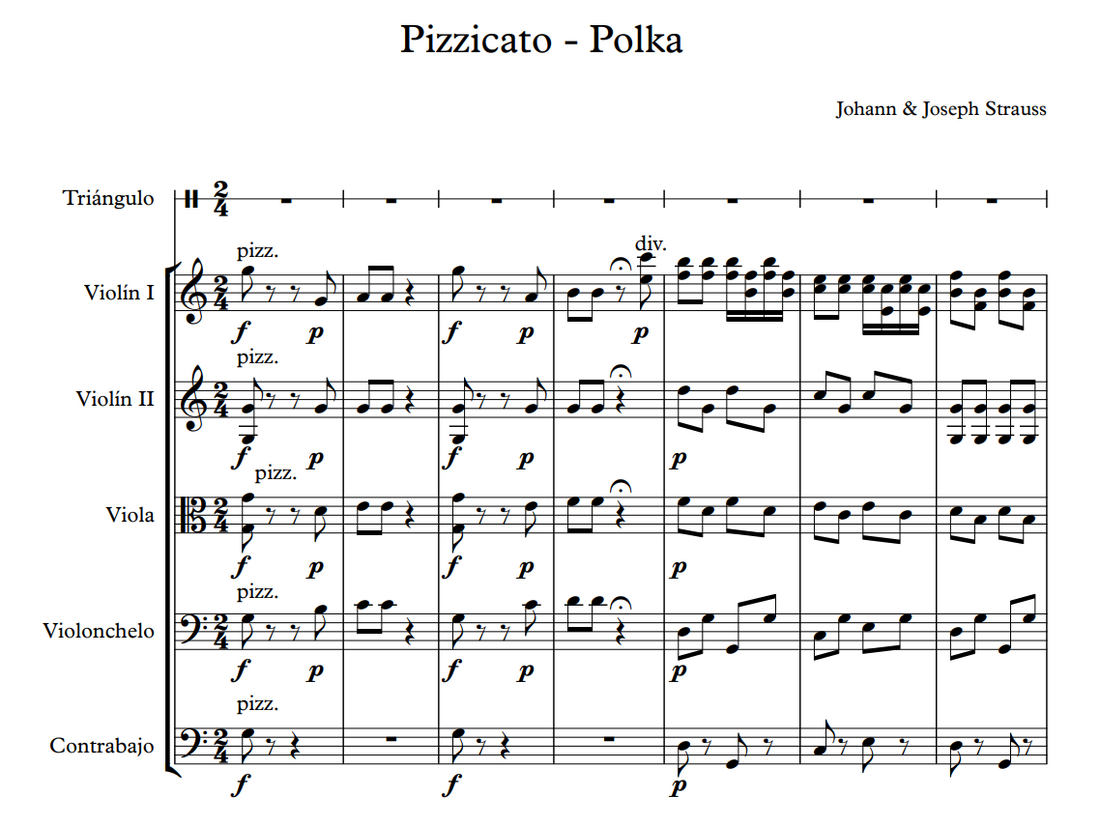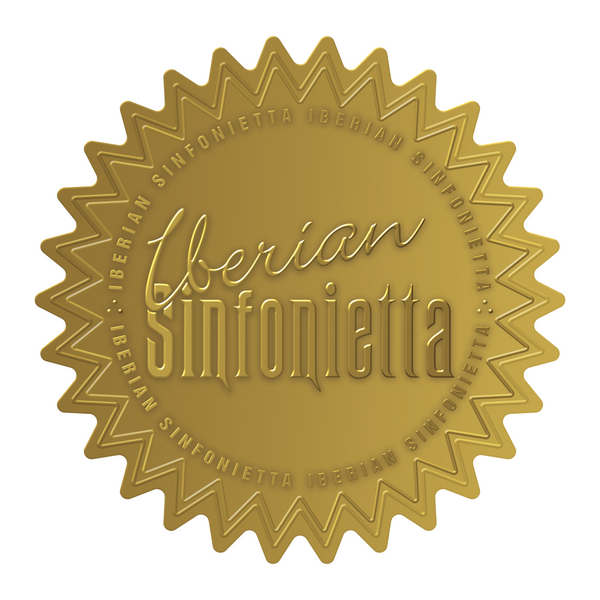
A TOUCH OF HUMOR WITH THE POLKA PIZZICATO

Dear public,
Today we would like to bring you closer to one of the most striking works that make up the repertoire of the Concert on May 8 of the Iberian Sinfonietta at the Peace Palace in Fuengirola . We are referring to Pizzicato Polka.
As you know, the repertoire for next May 8 is dedicated to the sense of humor in classical music. It is a refined humor in all cases, it is not about laughter, but about including the playful and the casual but always within the framework of academic music. We have an example in the New Year's Concerts by the Vienna Philharmonic, in them, the guest conductors, between waltzes, always find a moment to show their sense of humor and make the concert more relaxed, sometimes they direct the audience, other times some gesture, even a director has made a call on the cell phone from the stage... you know the result, always packed. In this sense, and taking advantage of the fact that we are talking about Vienna, it is obligatory to talk about the Strauss family, whose works are part of the obligatory repertoire of both that concert and European music of the 19th century.
 This saga of musicians begins with Johan Strauss I or Johan Strauss “father”. We owe him works such as the famous Radetzky March . Among his children, the most famous musicians were Johan Strauss II or Johan Strauss “son”, Joseph Strauss and Eduard Strauss. Precisely the first two brothers, Johan and Joseph received an invitation to an important Concert in Russia. On that long journey, they decided to undertake an original work, a dance piece with a popular air, happy and agile but performed with the famous pizzicato technique, in which the strings are played, not by the bow, but by the fingers of the right hand. The result was the highly successful premiere of the Pizzicato Polka, a work that they immediately had to repeat at the Concerts in Vienna upon their return from Russia, as word spread of the work, which was so fun, friendly and virtuosic, and from there it went to the repertoire of so many orchestras throughout the world. Johan Strauss is also the composer of waltzes as famous as the Blue Danube, but this work, created jointly with his brother Joseph, is undoubtedly a piece of entertainment much loved by the public.
This saga of musicians begins with Johan Strauss I or Johan Strauss “father”. We owe him works such as the famous Radetzky March . Among his children, the most famous musicians were Johan Strauss II or Johan Strauss “son”, Joseph Strauss and Eduard Strauss. Precisely the first two brothers, Johan and Joseph received an invitation to an important Concert in Russia. On that long journey, they decided to undertake an original work, a dance piece with a popular air, happy and agile but performed with the famous pizzicato technique, in which the strings are played, not by the bow, but by the fingers of the right hand. The result was the highly successful premiere of the Pizzicato Polka, a work that they immediately had to repeat at the Concerts in Vienna upon their return from Russia, as word spread of the work, which was so fun, friendly and virtuosic, and from there it went to the repertoire of so many orchestras throughout the world. Johan Strauss is also the composer of waltzes as famous as the Blue Danube, but this work, created jointly with his brother Joseph, is undoubtedly a piece of entertainment much loved by the public. 
The Polka is originally a dance from the Bohemian area, one of the regions that make up the current Czechia, a region whose capital is Prague, but it is a dance that has been exported to many countries, especially Central and South America and has become fused with other popular dances from these countries. Like the Waltz, although its origin is popular, it became stylized and became a dance work of the Court, but it always retains that joy typical of its lively binary rhyme.
As you will see in the Concert on May 8, the staging of this work does not end there, it also includes a famous percussion “solo”, a triangle, to be more exact, in which the soloist, who barely plays a few bars, he has time to “do everything” on stage while his companions do not stop playing in pizzicato, finally, he gets to play, something that is questioned, since he is wandering around the stage for a long time . All of this always generates a relaxed atmosphere among the audience and also among the orchestra, and that is what it is all about. Not to miss it
Jorge Rodríguez Morata
Pedagogical content coordinator
